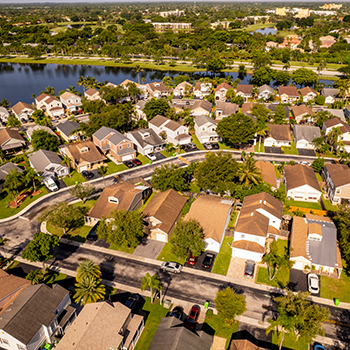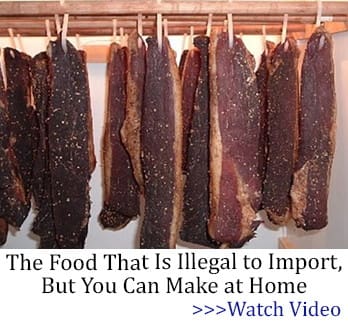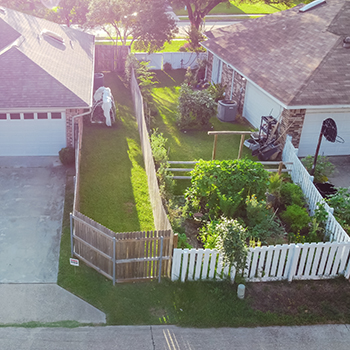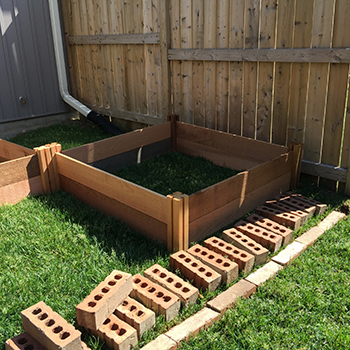Homeowners Associations (HOAs) enforce regulations aimed at maintaining neighborhood aesthetics, property values, and community standards. For many, the appeal of a HOA is the guarantee of a well-kept community landscape.
However, for homesteaders, HOAs can pose a dilemma. Self-sufficiency involves relying less on external systems and meeting one’s basic needs independently.
Typical HOA regulations restrict activities like gardening, collecting rainwater, and raising animals – key elements of self-reliant living. So can you be self-sufficient living under HOA oversight? That’s what we’ll be covering today.
What is a Homeowners Association (HOA)?
A HOA is an organization that governs and maintains a community of homes, such as a subdivision, condo building, or planned neighborhood.
HOAs establish and enforce rules that residents must follow. People who buy property in a HOA community are required to pay recurring dues and fees, which fund the upkeep of shared amenities and common areas.
Prospective residents usually have to meet with the HOA board and agree to comply with all community rules before purchasing in the neighborhood.
Rules address aspects like home exterior maintenance, landscaping, recreational facilities use, and parking.
Benefits of HOAs for Homesteaders
Living in a neighborhood with a homeowners’ association offers numerous advantages.
- One major perk is the low-maintenance lifestyle – you can wave goodbye to tedious yard work like mowing the lawn or planting trees. The HOA typically handles landscape and hardscape maintenance, pest control, and tree pruning, freeing you from these tiresome chores.
- Another pro is the simplified billing. Similar to renting, HOA fees often consolidate utilities like water, sewer, trash, gas, and recycling into one convenient monthly payment. This bundling makes life easier by streamlining your bills.
- Additionally, HOA communities frequently provide access to fantastic shared amenities that residents wouldn’t have alone. Examples include pools, golf courses, tennis courts, clubhouses, parks, gyms, and more. The best part? You get to enjoy these without worrying about cleaning or upkeep – the HOA takes care of maintenance using your fees.
- Conflicts with irritating neighbors like barking dogs or loud parties can also be resolved through the HOA instead of awkward confrontations. The association enforces rules and regulations to handle issues between residents.
- Finally, HOA neighborhoods often foster a greater sense of community and social opportunities. Neighbors interact at meetings and shared events funded by the HOA fees, making it easier to connect. These close-knit interactions and amenities create an engaging, communal atmosphere.
Related: The Best Places In America To Start Your Homestead
Challenges of Self-Sufficiency in HOA Zones
For self-sufficiency-seekers, typical HOA restrictions present clear obstacles:
- Growing food – HOA rules often severely limit or prohibit vegetable gardens, cutting off homegrown produce.
- Harvesting water – Installing rain barrels, cisterns, or greywater systems may be disallowed.
- Generating power – Solar panels or wind turbines visible from the street could be rejected.
- Raising animals – Chickens, bees, and other small livestock are frequently banned.
- Property modifications – Approval may not be granted for greenhouses, sheds, or utility upgrades.
Attempting prohibited activities can lead to citations, fines, and being compelled to remove them. This makes self-reliance difficult.
How to Homestead in a HOA Neighborhood
When starting any kind of homesteading endeavor, it’s crucial to understand the applicable rules and restrictions for your property.
Different local governments can have widely varying ordinances, so don’t assume your neighbor’s freedoms apply to you. Do your homework to determine what is allowed in your specific municipality and neighborhood.
- Research city ordinances, which are laws unique to your town or city. Neighboring towns can have very different regulations, so focus only on yours. Search online or call the city offices to learn about animal allowances based on property size, etc.
- Also, look into any HOA covenants for your neighborhood. HOAs aim to maintain community standards by enforcing city codes and additional neighborhood rules. They are typically run by a management company or resident volunteers and can be dissolved if enough homeowners petition. HOA regulations may be more restrictive than the city’s.
- See if there are any CC&Rs (Conditions, Covenants & Restrictions) recorded for the neighborhood, which may mirror or exceed HOA rules. Unlike city codes, CC&Rs can restrict activities even if the city permits them.
- Finally, understand nuisance laws that enable neighbors to complain about annoying pets or other disruptions, regardless of formal allowances.
Overcoming HOA Restrictions for Homesteading Practices
When establishing homesteading projects like gardening or raising animals, it’s important to understand local ordinances that may restrict certain activities. However, with creativity and adaptation, many limitations can be worked around successfully.
For gardening, most HOA rules prohibit containers in front yards for aesthetic reasons. Solutions include building attractive ornamental planters or incorporating edible landscaping that blends in.
Grow salad greens and root crops up front, save corn and vines for back. Utilize fruit trees ornamentally in front yards. Backyard gardens can be as productive as desired.
For chickens, rules often prohibit poultry for meat/eggs. Start with just 2-3 hens claimed as pets, not meat birds. Avoid noisy breeds like Rhode Island Reds.
Never get a rooster. Build an attractive coop to avoid complaints. Butcher discreetly if needed. Educate neighbors on benefits.
For goats, rules restrict livestock based on property size. Opt for small pet breeds like Nigerian Dwarfs.
Get does only, no smelly bucks. House neatly and emphasize as pets. Explain benefits to neighbors to get buy-in. Show goats can qualify as pets vs. livestock. With creative solutions, aesthetic care, neighbor education, and starting small, many homesteading dreams can become reality even with restrictive ordinances. Understand the rules, but recognize there are always possibilities if you’re willing to adapt.
Related: 7 Projects That Turn You Into A Self-Sufficient Homesteader
How to Avoid Being on the Wrong Side of the HOA
A key strategy for avoiding issues with a HOA when engaged in homesteading activities is to get out ahead of any potential complaints by showing your practices in the best light.
- Make an effort to keep all aspects of your home neat, clean, and visually appealing. Construct an attractive coop and animal enclosures. Maintain tidy gardens and grounds. This neat presentation will minimize neighbor complaints and objections.
- Also, work to educate those around you about the realities of sustainable practices versus common misconceptions. Share your passion for organic farming and homegrown food. Bring neighbors fresh eggs and produce. Explain the health benefits to animals and humans.
- When people picture chickens, they may imagine dirty or smelly conditions. But the truth is animals kept humanely in a well-maintained habitat are clean and healthy. Counter the stereotypes through outreach.
By being proactive with an immaculate presentation and community education, you can avoid many issues with a HOA. Inform neighbors of the facts before complaints arise. With understanding and outreach, more homeowners may come to support and value sustainable practices.
Living in a HOA Zone: Can You Be Self-Sufficient?
Though HOA living poses challenges, you can still pursue self-sufficiency through smart adaptations. Seek out allowances within HOA rules to grow food, generate resources, reduce waste, and collaborate.
With patience and creativity, you can craft a self-reliant lifestyle aligned with your values and community. Don’t let HOA hurdles stop you from living sustainably.
You may also like:
The Worst States for Living Off Grid
An Insanely Effective Way to Build a 5 Year Food Stockpile (Video)
Off-Grid Homesteading VS. Prepping
What Livestock My Grandparents Raised During The Great Depression










